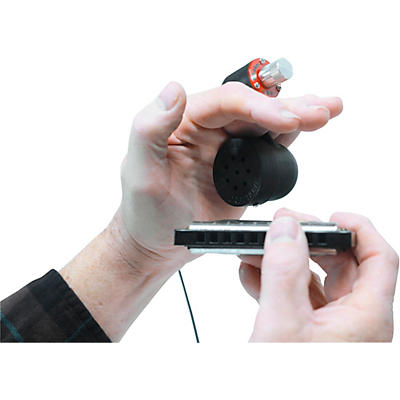From country to jazz, folk and even rock, the distinctive timbre of the harmonica may have first taken hold in North America through blues, but it's laid down roots that have spread across all genres. It's become a way for all sorts of musicians to bring an original touch and gritty feel to bridges and solos but, because of its complex, layered harmonic tone, it requires special accessories and skills for it to translate well to stage performances and recordings. Enter harmonica microphones.
In the beginning, Chicago Blues players such as Little Walter and Big Walter Horton relied on Bullet microphones of the type used by radio taxi dispatchers for their easy availability and compact size. They developed a technique of holding and cupping both the harmonica and mic, varying the seal to create all sorts of effects and tonal colors. This technique is still popular today and handheld mics such as the Digital Reference Red Howler Harmonica Mic can help you achieve that classic sound. Its warm tone and volume knob makes it great for live performances.
Harmonica amplification and recording technology has not stood still, however, and other styles of handheld mics have been developed to reproduce different tones, such as the Shaker Crystal XLR Harmonica Microphone's clean, accurate sound. This mic's excellent feedback rejection and technique sensitivity leads to stunning acoustic clarity. The ergonomic, cylindrical shape is also popular among many artists.
If, however, you're playing your harmonica on a neck rack in tandem with a guitar or other instrument, you might not be able to always cup your mic. In that case, a clip-on harmonica microphone is an excellent option. The compact, low profile design still lets you use a standard neck rack, but they're perfect for handheld use as well. The Applied Microphone Technology AMT HR2 Clip On Harmonica Condenser Microphone, for example, has spring-loaded clips for easy attaching and is designed to reproduce a natural sound.
The combination of the appropriate mic choice and proper technique is what takes a harmonica performance from good to great and what allows you to translate a solid acoustic performance to a recording or larger stage. Whether you're following the lead of blues or folk legends or experimenting with incorporating harmonica sounds into a whole new style, a solid harmonica microphone is essential for your sound.






































































































































